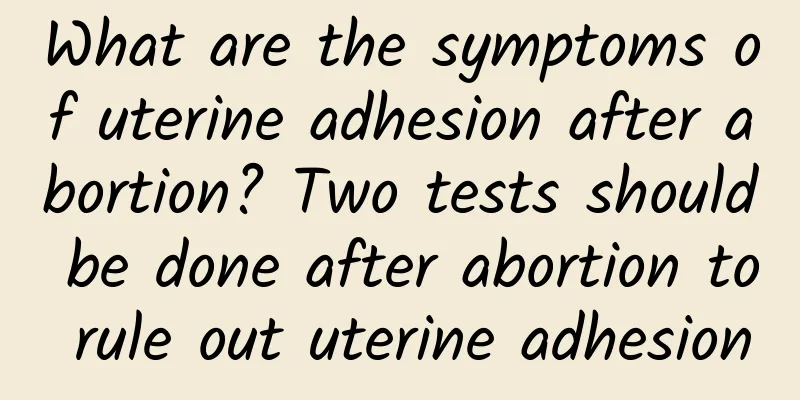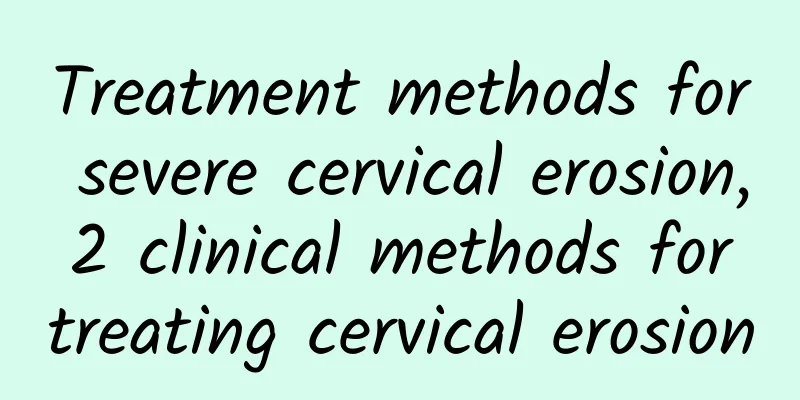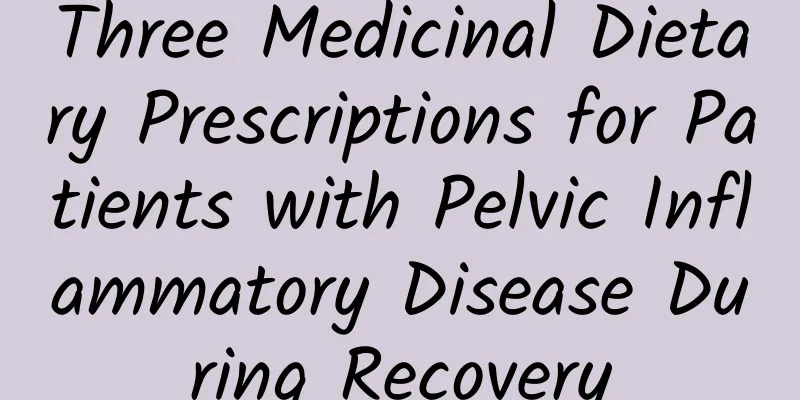What are the symptoms of uterine adhesion after abortion? Two tests should be done after abortion to rule out uterine adhesion

|
Abortion is a relatively common surgery, but it is not that simple. After the abortion, it will cause damage to the uterus. This damage may be the first time or many times. Therefore, abortion is like giving birth to a child. The body may experience many symptoms. Patients should also know how to prevent uterine adhesions after abortion. If these symptoms occur, they should be highly vigilant. symptom 1. Lower abdominal pain: If the patient's condition continues to worsen, abdominal pain will occur, and some may even have sleepless nights, which has a great impact on women's lives and work. Generally, about one month after artificial abortion or curettage, sudden lower abdominal spasmodic pain occurs. Some patients have severe abdominal pain, restlessness, difficulty in movement, and even painful gas and defecation. 2. Abnormal menstruation: Patients with complete cervical adhesion may experience amenorrhea, while patients with partial cervical adhesion or partial endometrial destruction may experience scanty menstruation but normal menstrual cycle. If it is caused by cervicitis or other inflammation, it will lead to amenorrhea, and some patients may experience irregular menstruation, prolonged menstruation, dark menstrual blood, and other abnormal phenomena. 3. Pregnancy abnormalities: Patients are prone to pregnancy failure, including early and mid-term miscarriage, premature birth, ectopic pregnancy, overdue miscarriage, intrauterine fetal death, etc. Infertility is the main symptom of this disease, which often leads to blockage of the fallopian tubes in women, resulting in the inability of the fertilized egg to implant normally, and ultimately leading to infertility. examine 1. When exploring the uterine cavity, the patient feels that it is narrow or cannot be explored. 2. Uterine iodized oil contrast examination shows that the uterine cavity is only partially filled or not filled at all. measure 1. Use a cervical dilator or probe to separate adhesions. 2. Separate adhesions under direct hysteroscopy. 3. After separation of adhesions, an IUD is placed in the uterine cavity for 3 to 6 months to prevent adhesions from occurring again. 4. Artificial cycle treatment can be given after surgery for 2-3 cycles. |
<<: Will chronic cervicitis affect pregnancy? Pregnancy tips for women with chronic cervicitis
Recommend
What are the causes of adnexitis?
What are the causes of adnexitis? Adnexitis is a ...
What are the drugs for regulating irregular menstruation? Choose drugs according to symptoms
Menstruation is a normal physiological manifestat...
What should women with endometrial thickening pay attention to?
The thickness of the endometrium generally change...
What is the normal color and state of vaginal discharge? It changes with the menstrual cycle
Generally speaking, the normal color and state of...
What is a chocolate cyst?
What is a chocolate cyst? Although chocolate cyst...
Postpartum mothers complain: I can’t regain my weight? Doctors reveal: 5 major reasons why it’s hard to lose weight after childbirth
Many women always complain that "the weight ...
This is the right way to eat at the year-end party! Nutritionists teach you how to eat smart but not full
A hard year is about to pass, and it’s time to ea...
Do you often not eat enough vegetables? While greens are cheap, make hot cabbage and chicken breast salad
Crisp and refreshing, very satisfying Cabbage is ...
Common symptoms of chronic pelvic inflammatory disease
Pelvic inflammatory disease can usually be divide...
How to reduce the incidence of ectopic pregnancy?
How to reduce the incidence of ectopic pregnancy?...
What should I pay attention to in the late pregnancy if I have uterine fibroids? What should I do if my uterine fibroids grow fast in the late pregnancy?
What should I pay attention to during the late pr...
What causes pelvic inflammatory disease?
According to experts, pelvic inflammatory disease...
How to care for female chronic cervicitis and first-grade hyperplasia? Introduction to nursing methods for confirmed chronic cervicitis
Cervicitis is very common. It is a relatively ter...
People with allergic constitution cannot grow up. Find out the cause and prescribe the right medicine
Parents always hope that their children will beco...
How much harm does chronic cervicitis cause to female patients?
Chronic cervicitis is the most common gynecologic...









